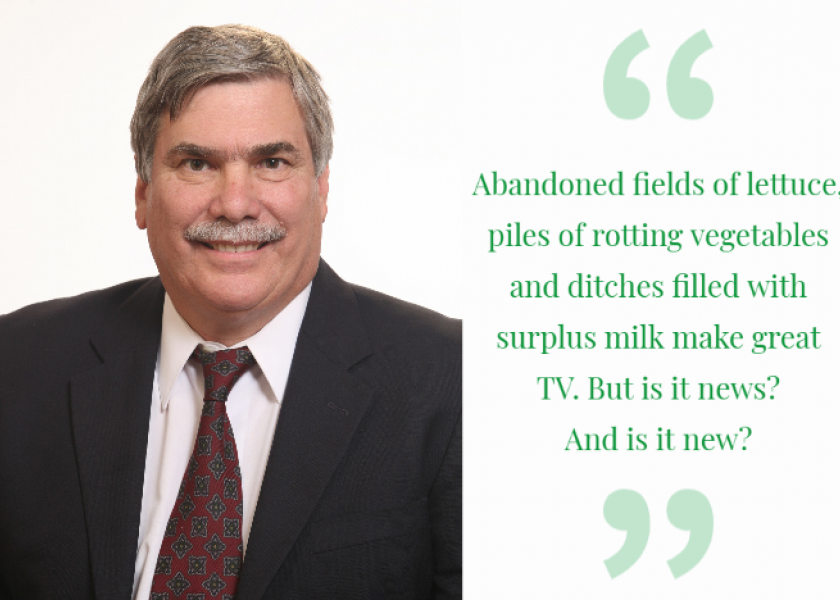Of scarcity and surpluses

For produce it has been the tale of two industries. Retail is rockin’. Foodservice? Not so good. In grocery it’s overtime and hiring. Foodservice? Depending on the segment, it’s bad or worse. Other than the food banks, I only know of one foodservice business that was up last month.
As foodservice outlets began to close, the 50% of food dollars that is normally spent out of home began to show up at grocery stores like swarms of locusts.
Fifty doors of frozen entrees, sides and veggies were stripped bare at my store, along with certain cleaning products, paper products, over-the-counter medicines and — for some strange reason — bottled water. It looked like a celery display at the peak of the juicing craze.
There is a limit to how much production and distribution can readjust and repurpose in a short period.
Social media was full of posts of hoarding and even profiteering. Our leaders took to the airwaves to assure us that we would not run out of food.
I’m not going to lie, I was really delighted and proud to hear our elected leaders refer to the whole supply chain and recognize that all links were essential. Not only essential, but heroes. Insert blushing smile emoji here.
Lately the news stories have featured negative impacts of the COVID-19 pandemic to sectors of the economy. When 10 million university students come home, 40 million school children stay home and two million airline passengers a day don’t fly, consumption patterns change overnight. There is a limit to how much production and distribution can readjust and repurpose in a short period.
For more coronavirus coverage, check out our landing page on the topic here.
It doesn’t make the news, because it is not a good visual, but many suppliers have a stack of invoices that will go unpaid. Perhaps there should be a government program to factor unpaid foodservice invoices. That’s not an ag subsidy; it’s a bandage to stop the bleeding.
Abandoned fields of lettuce, piles of rotting vegetables and ditches filled with surplus milk make great TV. But is it news? And is it new? The narrative for the past five years has been about food waste. Forty percent of all food is not consumed and the greatest portion is abandoned on the farm.
The single-largest reason? Overproduction. On cable news I see a video of the front-end loader of a tractor dumping yet more squash on what looks like an endless pile. My LinkedIn feed is full of identical videos of mountains of stone fruit and other produce being abandoned at some point of the supply chain from years past. In grapes, June and July of 2019 and the fourth quarter of 2018 both had conditions where wholesalers and food banks would not take any more product.
Congratulations: production has surpassed market need.
Yes, “you couldn’t even give it away.”
In my lifetime, production agriculture, including produce, has been all about becoming more efficient and creating economies of scale. Efficient usually means high yields. The underlying economic assumption is that all of the output could be sold.
Congratulations: production has surpassed market need. Abandoned fields and unshipped units have always been a reality. Let’s not blame all our problems on Wuhan.
John Pandol is director of special projects for Delano, Calif.-based Pandol Bros.
Related content:
Some Growers Plow Under Fields As Fruit, Vegetable Demand Disappears
Congress passes $484 billion stimulus bill
What is the biggest uncertainty as industry emerges from COVID-19?







